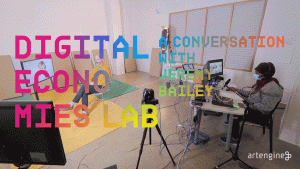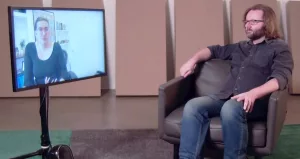
Art and Capital
Famous New Media Artist Jeremy Bailey helped shape the structure of the Digital Economies Lab and here we discuss their vision for artistic prosperity in the 21st century. We chat about artists’ complicated relationship to capital and how we are in an exciting moment of transformation. Join us, as we delve into questions of value, the pace of production, and our perception of reality, augmented or not.

